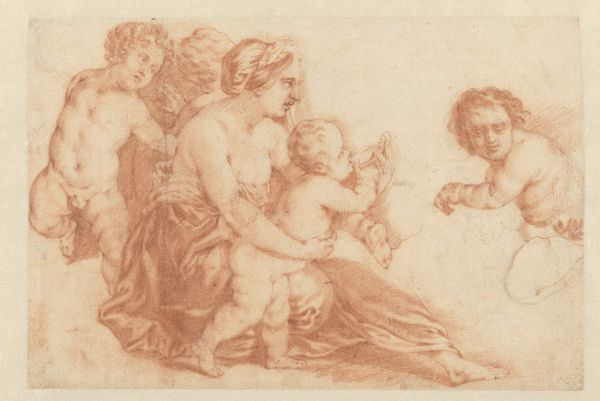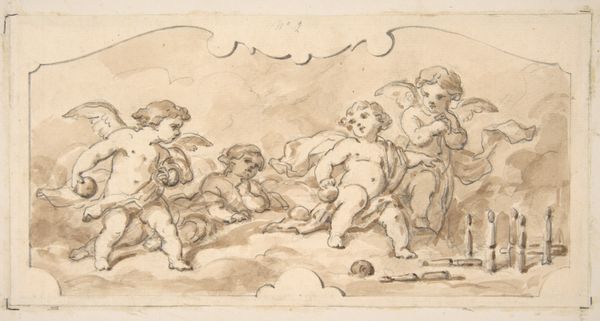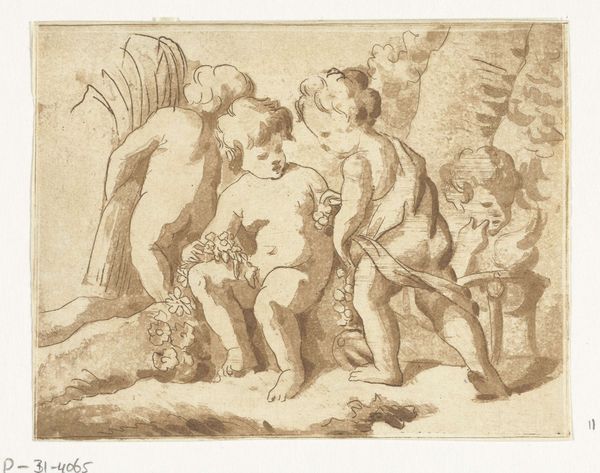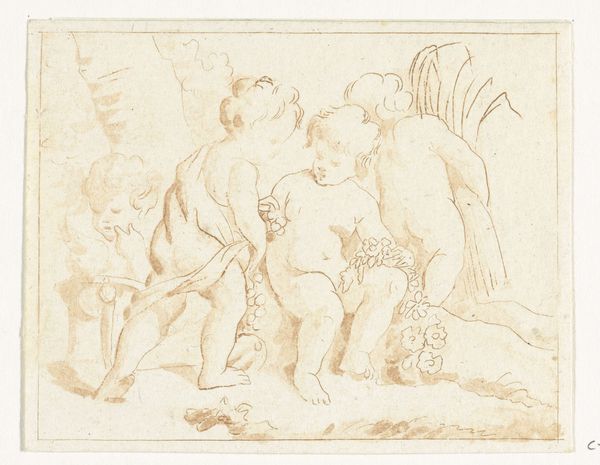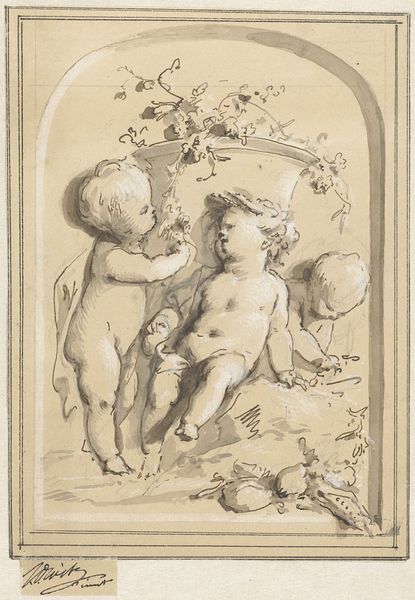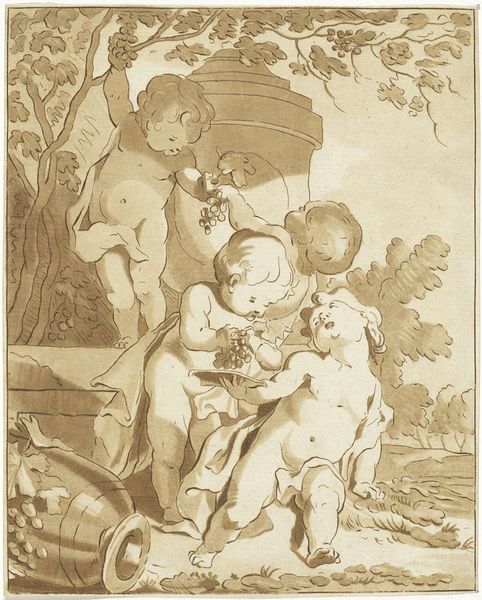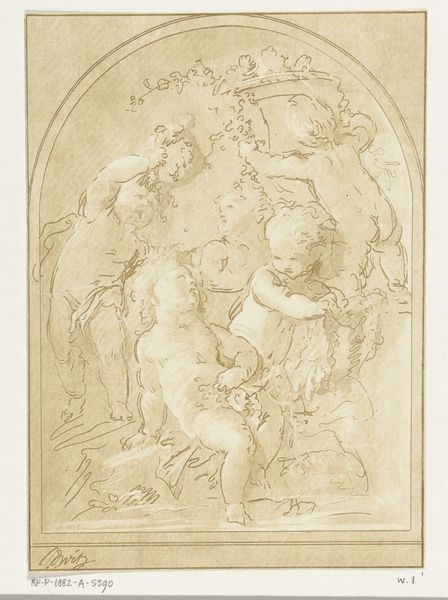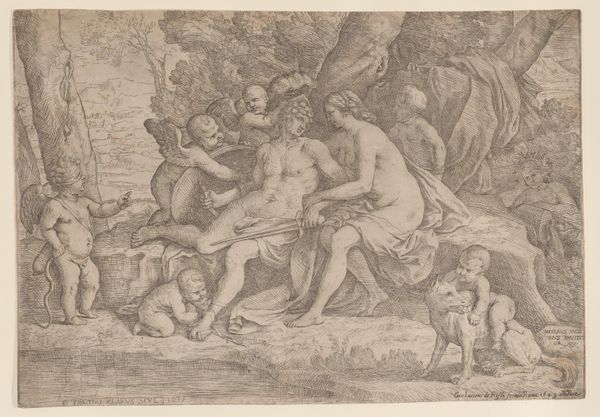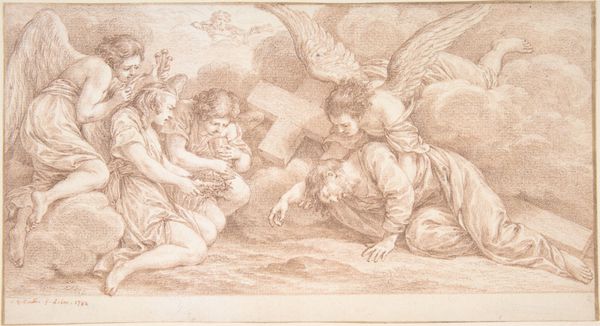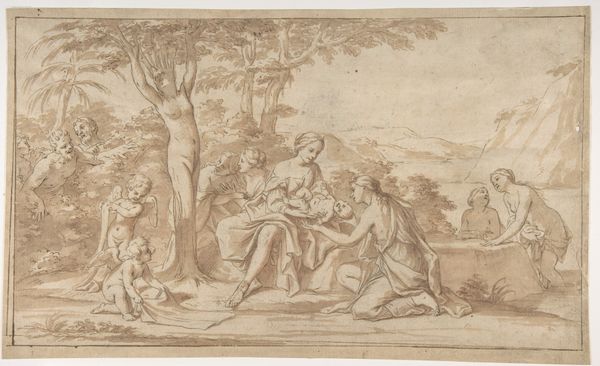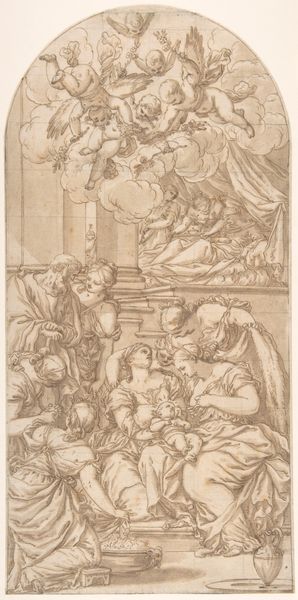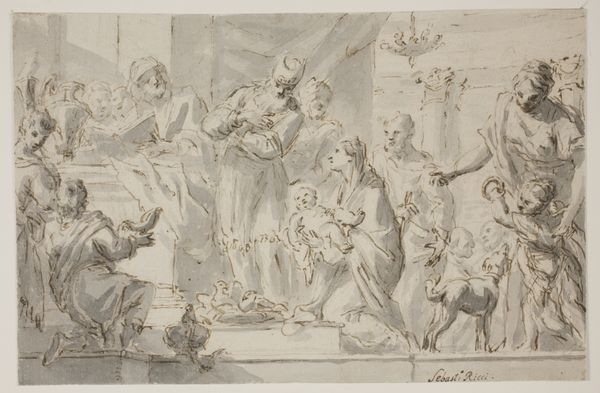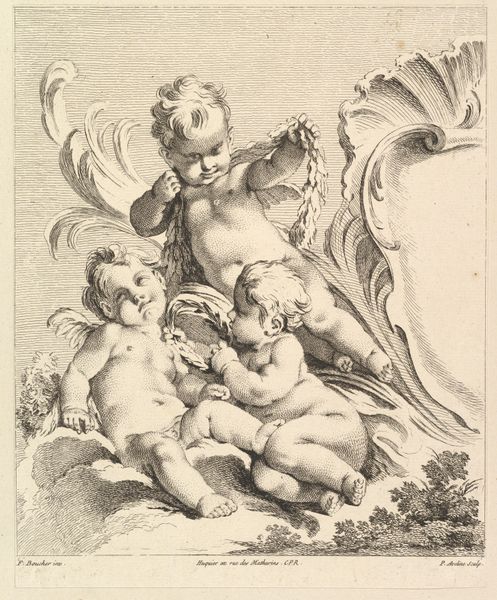
drawing, print, pen
#
drawing
#
allegory
#
baroque
# print
#
figuration
#
pencil drawing
#
pen
#
history-painting
#
academic-art
Dimensions: 5 9/16 x 7 3/8in. (14.2 x 18.8cm)
Copyright: Public Domain
Curator: Domenico Piola created this pen and brown ink drawing, titled “Putti with the Attributes of the Arts,” sometime between 1627 and 1703. It’s a Baroque piece currently residing at the Metropolitan Museum of Art. Editor: Immediately, the word "playful" comes to mind. There’s a lightness, almost a childlike joy radiating from these cherubic figures and their artistic pursuits. It has the feel of innocence in progress. Curator: Yes, but there's something deeper. Putti, often seen in art as representations of divine love, are here personifying the arts. We might think about what it meant to equate creativity, expression, with something nearly sacred during that era. And more broadly, why visual culture was centered around the cultural capital of divinity for its legitimation? Editor: Absolutely. Looking at the symbols – the canvases, brushes, musical instruments– they’re presented as more than just tools. Each of these becomes an emblem, imbued with cultural weight that persists through time. Curator: The drawing embodies the ideals of art promoted within academic and courtly milieus, and this depiction naturalizes hierarchies by gendering art making itself. If we follow some cultural theorists, who say childhood is a social construct, what might these cute babies be performing in Piola's art? Editor: Good point! There's a fascinating dialogue occurring between these angelic forms, representative of artistic creation, and the symbols themselves. Think of the dog curled up at the feet of one putto; could it allude to something outside the Western construction of high art? Curator: Precisely, that brings us to question the canon that elevates this type of idealized depiction of childhood and discards others! It is important to engage with alternative aesthetic universes where cuteness doesn't mean what it means here. Editor: It’s as if Piola captured the timeless essence of art – not just its historical manifestation but also its emotional and spiritual underpinnings. Curator: True, it serves as a good example of how the language of art has shaped the meaning of these concepts over centuries. Editor: It's been fascinating to see how one drawing speaks volumes on history and psychology through the language of symbols. Curator: Yes, and by dissecting art's language we become more adept readers of culture's grander narratives!
Comments
No comments
Be the first to comment and join the conversation on the ultimate creative platform.
